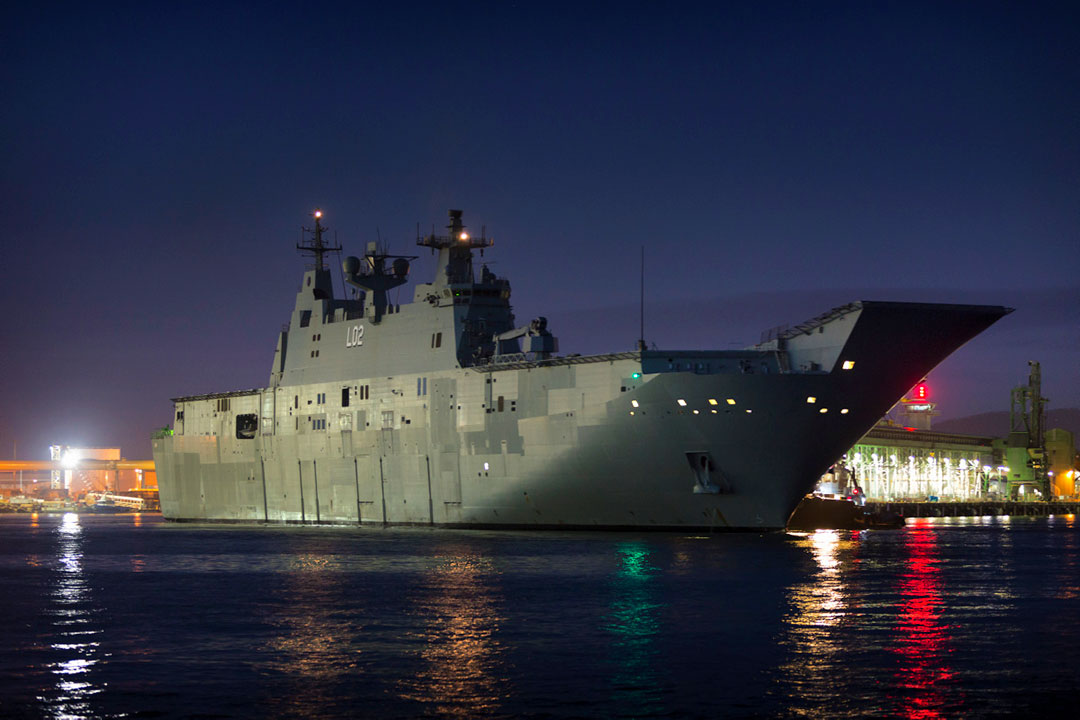Sea drills may boost China deterrence

By Kyle Aristophere T. Atienza, Reporter
JOINT naval drills among the United States, Japan and Australia in the South China Sea this week could embolden other countries to stand up to China’s increasing assertiveness at sea, according to political analysts.
“The upcoming joint exercises by the Philippines’ closest ally and partners signify the increasing push for states to cooperate under a rules-based international system,” Victor Andres C. Manhit, president of Manila-based think tank Stratbase ADR, said in a Facebook Messenger chat.
The trilateral drills aim to show the three countries’ commitment to rule of law after the Chinese Coast Guard on Aug. 5 fired water cannons at Philippine vessels trying to deliver food and other supplies to a sunken ship at Second Thomas Shoal in the South China Sea, the Associated Press reported at the weekend, citing unnamed Philippine security officials.
Three aircraft carriers will be used during the drills, including Japan’s largest destroyer JS Izumo, Australia’s amphibious assault ship HMAS Canberra and the US amphibious assault ship USS America, AP said.
The Philippines, which won’t be part of this week’s drills due to logistical challenges, is open to becoming a participant in the future, it added.
It said the three countries’ commanders will meet with their Philippine counterparts in Manila after the drills.
“With these exercises, the Philippines, US, Australia and Japan are forming a united front against those who attempt to disrupt the rules-based international order,” Mr. Manhit said. “It also signals that any acts of coercion will never be tolerated by these countries.”
He expects similar initiatives with other states. “I look forward to similar initiatives in the near future with other states that share our values and believe in the rules-based international system.”
The US, Japan and Australia were among the countries that immediately issued statements of concern after the water cannon incident.
This week’s three-way drills represent an “important form of signaling by the three countries toward their desire to be consistent and steadfast in their strengthening partnership with Manila,” Don Mclain Gill, a political science lecturer at De La Salle University’s Department of International Studies, said via Messenger chat.
“The location of this exercise is crucial to the security of Philippine sovereignty and sovereign rights,” he said. “Such engagements serve as a reminder to China that all four countries are committed to securing the rules-based order, particularly in the South China Sea.”
‘LONG WAY TO GO’
This week’s trilateral drills are an important step in Philippine efforts to cement international support, Gary Ador Dionisio, dean of De La Salle-College of Saint Benilde School of Diplomacy and Governance, said in a Messenger chat.
“At the same time, this is also a platform to do some benchmarking of our defense capabilities,” he said. “We have a long way to go with regard to our modernization, but we need to be strategic in terms of prioritizing the most important aspect of our modernization plan.”
Asian countries have called for respect for international law after the Aug. 5 sea incident, including South Korea and India.
Mr. Gill said India engages closely with the US, Japan and Australia through naval drills. “In fact, the Indian Navy has now also extended the operational reach of its submarines not only toward Southeast Asia but also close to Australia,” he said.
India has reacted with shock and caution to the loss of at least 20 soldiers at its disputed border with China in 2020, with images of Chinese President Xi Jinping burned in Indian cities.
Experts have said Indian efforts to expand influence in Southeast Asia would allow the region to counter China’s dominance.
In an unprecedented move, India last month revised its stance on the sea dispute between the Philippine and China, showing support for a 2016 arbitral ruling that voided China’s expansive claims in the South China Sea.
India, which is seen boosting ties with the US, is one of the world’s fastest-growing economies. It is expected to reach high middle-income status by 2047.
Mr. Gill said South Korea, despite trying to cautiously balance its historical ties with both the US and China, is now seeking to strengthen its security ties with the US and Japan, “with whom it had frosty relations for the past years.”
South Korea exported goods worth $136 billion to China in 2019, accounting for a quarter of its total exports. But it also needs to balance ties with China as it counters North Korea’s threats. Beijing is considered a major ally of Pyongyang.
Mr. Gill noted that Washington, Tokyo, and Canberra are now seeking to institutionalize a more robust and functional trilateral relationship “with the hopes of maintaining peace and stability in East and Southeast Asia.”



